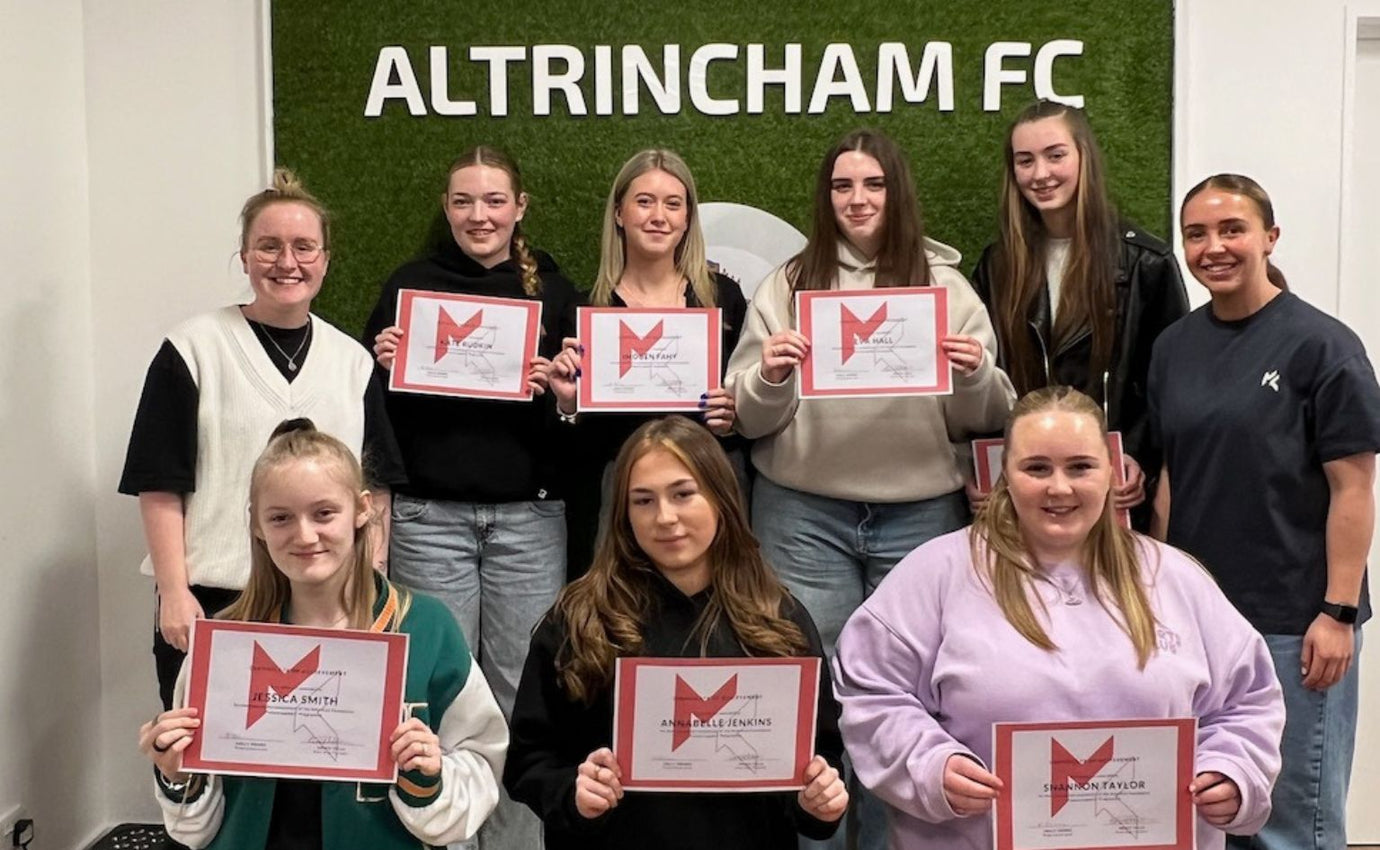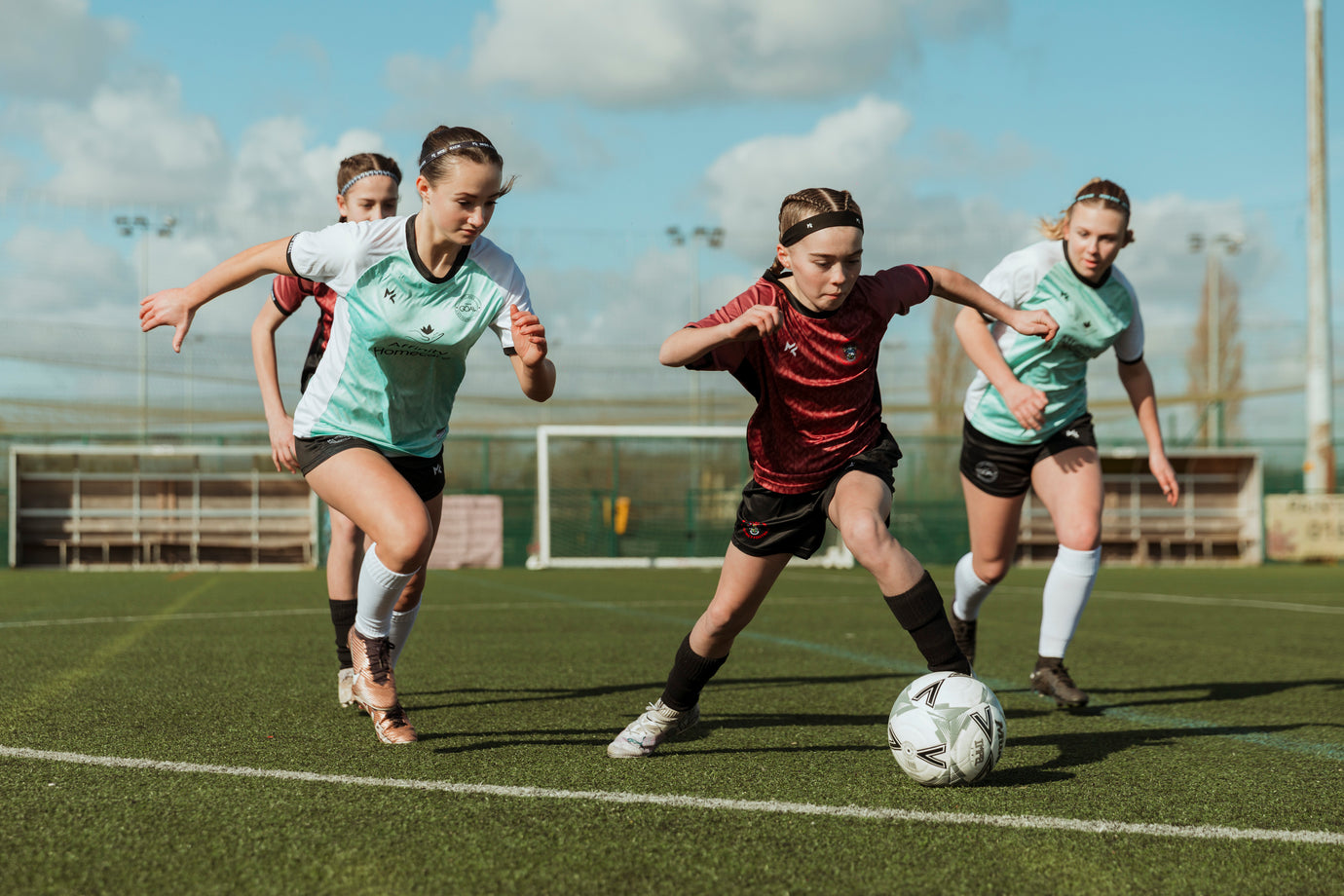ACL Injuries in Women’s Football
Five of the 20 nominees for the 2022 Women’s Ballon d’Or are currently sidelined with ACL injuries; Alexia Putellas (injured on the eve of the Euros), Beth Mead, Vivianne Miedema, Catarine Macario and Marie-Antoinette Katoto all sustained an ACL injury in 2022. We are still, now in May of 2023, hearing breaking news of female footballers having sustained ACL injuries far too frequently, with Leah Williamson the latest high-profile player to be added to the list.
It is evident that there is a lack of research on female athletes and more specifically, on the injuries sustained by female athletes. We are repeatedly hearing the same phrase - “torn ACL” - and yet we still do not know why women are more likely to suffer at the hands of the injury than their male counterparts.
Health specialists and professionals are suggesting it could be the result of a plethora of factors, one of which is the menstrual cycle. The elevation of oestrogen levels in the second week of the cycle can affect the stability of joints, making them more susceptible to injury. Collagen can be affected and can therefore create looser joints, but the scientific research into this is still limited and so it remains unknown to what extent this increases the risk of injury, if at all.
The structure of women’s football can also be held accountable with female footballers being noticed much further on in their careers than male footballers. With academies in place to recognise the talent of young male players from as young as five years old, they are nurtured, trained and developed for years before entering the professional game, strengthening them significantly, whereas female footballers are often noticed considerably later in their careers and so perhaps are provided less dedicated nurturing, development and management.
Similarly, the disparity between the men’s and women’s games, even in the present day when the Lionesses are breaking attendance records at the Euros and Arsenal Women are making history by selling out the Emirates Stadium in the Champions League, is still prevalent with the two significantly unequal. The pitches used in the Women’s Super League are not on par with those used in the Premier League despite the WSL being its equivalent in English football: both the top division. We have seen women’s games being called off due to the freezing of pitches, something Premier League footballers would never have to worry about given the stadiums they play in, the facilities they have access to, and the undersoil heating they are afforded. Could these playing conditions increase the risk of injury?
Female athletes are up to six times more likely to have a non-contact ACL injury than male athletes are. Female footballers also play in men’s football boots - could there be a connection? Despite moving and running in a different way, females often play in boots with the length of studs designed to suit male footballers and their movement, resolutely increasing the chance of female players getting their boots stuck in the surface with injury following suit.
The women’s game is forever growing, expanding and developing, but the injury support still isn’t on the same level as it is in the men’s game, and it’s difficult to ignore the smaller details of pitches and boots, and the role that they could play in the increased risk of injury for female players. More research needs to be done.
The mental side of the injury is something not discussed as often as it ought to be. An injury that sidelines you for nine to twelve months has mental implications, as well as physical: the anxiety over the injury recurring can apply added pressure alongside the task of learning how to walk again after surgery, and building fitness back up to meet the demands of the ever-developing women’s game. Given the recent ACL injuries suffered by female footballers, it is increasingly likely that it will play on the minds of other players as they head into games and competitions now, with the thought looming over them of ‘what if I tear my ACL?’
The Women’s World Cup is fast-approaching and there’s no denying the impact these recent injuries are going to have, with the Netherlands’ record goalscorer, Vivianna Miedema, said to have “no hopes” of playing in the competition, and particularly for our Lionesses; with Beth Mead ‘a doubt’ for the World Cup, and Leah Williamson ‘ruled out’ of the competition entirely, England will not be taking the Euros winning squad with them to Australia. The physical impacts of this upon formations etc. will equal the mental implications; the Lionesses will be travelling across the globe without their captain, their leader, and ultimately their confidant - Leah Williamson has been central to the Lionesses’ success in recent months, and her absence is likely to have a great psychological impact on the team.
However, there has been some more positive news regarding ACL injuries coming out of the women’s game in recent weeks. On Thursday April 27th, 2022, Alexia Putellas was in the Barcelona squad to face Chelsea in the second leg of the Champions League semi-final, her first involvement in a matchday squad since Spain’s friendly against Italy on the July 1st, 2022. And on Sunday the 30th of April 2023, she returned to the pitch, replacing Claudia Pina in the 74th minute as Barcelona beat Sporting Huelva, 3-0. Alexia Putellas is providing physical light at the end of the tunnel for the currently injured players; she is showing that it is possible to learn how to walk again and build fitness back up off the back of an ACL injury, following the inspirational path of Chloe Kelly who returned from an ACL injury just in time to score the Euros winning goal in 2022, and is on fire in the Women’s Super League this season.
ACL injuries should not dominate the conversation surrounding women’s football, but given the lack of research into the injuries sustained by female players and the increasing amount of players on the sidelines, it cannot be helped. If the women’s game is to continue to grow as it is currently, we need the injury support and research to equal that of the men’s.
Blog post by Emily Laycock
@emilymaelaycock





